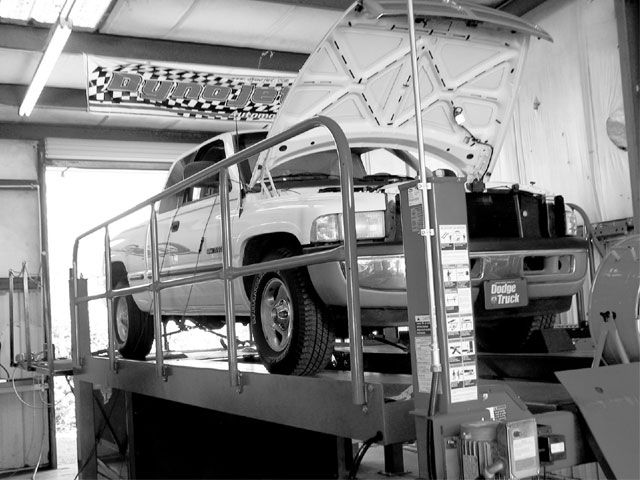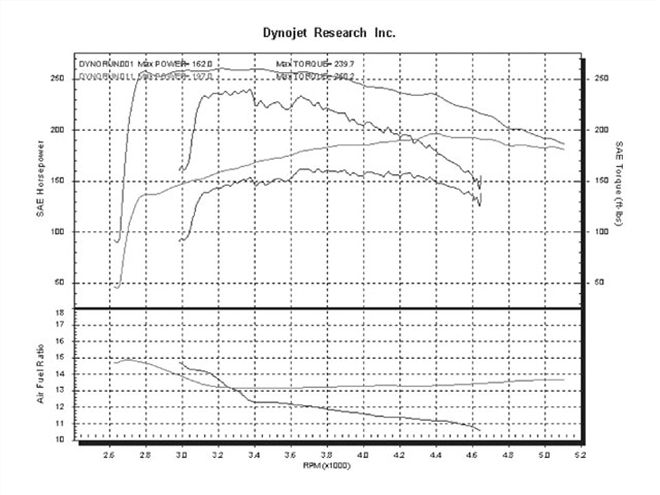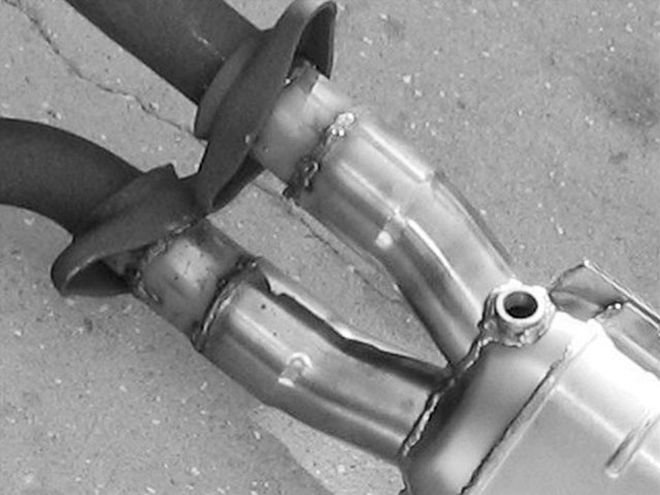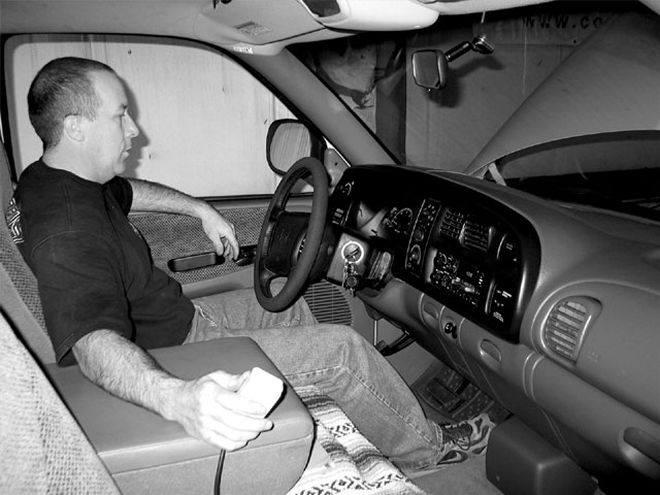
For centuries, trucks have come to mean one thing-utilitarian work vehicles. Since our trucks need to do the work we ask of them, sometimes subtle upgrades are in order. While some guys may feel the need to get into a camshaft or cylinder head change, there are others that just want to add a small amount of improvements in the form of bolt-on pieces. This is a quick and easy job. the returns are limited, but that doesn't mean they are not worthwhile.
The Gameplan
We had an afternoon with nothing to do, so we wanted to see how much horsepower we could bolt on to our '98 Ram 1500 with a 5.2-liter engine. Let's face it, the 318 Magnum in the Ram was not meant to be a powerhouse, but could it benefit from a couple performance mods? Even without the mods, we would be willing to put it up against any unmodified Ford or Chevy that is comparable in the cubic-inch department. This little 80,000-mile pickup can still hold its own with a car trailer on the back. But like any good gearhead, we can't keep our dang fingers off anything. So we got to thinking, If we get the engine to breathe better, that's gotta be a good thing, right? What about one of them hand-held programmers? The next question was who to call. For the exhaust, we decided to contact JBA Headers. While looking at their web site, we were pleasantly surprised to find they sell an almost complete exhaust system. We say almost because their exhaust systems consist of headers and everything from the catalytic converter back. (That statement will come into play later.) Not only do they have exhaust products, they also have power cables. Power cables are spark plug wires that feature 8 or 9mm diameters, low-resistance, and 100-percent silicone jackets.

With the exhaust situation handled, we had to figure out how to better get the air into the engine. Sure, the stock air filtration design is fine for an OE application, but we aren't OE. Airaid is a company that has been designing air intake systems for quite a while. Another piece of hardware available from Airaid is the PowerAid throttle body spacer. The PowerAid throttle body spacer is designed to improve the low-end torque and horsepower characteristics of your engine. This is accomplished by spacing the throttle body 1 inch from the intake and adding dyno-proven, Helix-style bores. As the air passes through the spacer, the bores create a vortex action that improves atomization, creating a more complete combustion and an efficiently burning engine.
Finally, we decided that Ma Mopar's factory initialized computer program was hiding a lot of potential. Superchips has a hand-held computer reprogrammer that enables the user to plug into the computer of their car or truck and reset some of the parameters of the stock computer. The TriTune Max Microtuner plugs into your OBDII port under the dash, retrieves the factory setting-in case you want to return it back to the truck later-and then uploads the requested programs you identify. Would these simple upgrades be worth the time to install or would we be wasting our time?
The Truth Be Told
We could have made this easy and simply bolted everything on, gone to the dyno and said, "lookey what we gained," but we wanted to know what each component was worth.
 The larger diameter lead tubes meant we needed to put reducers in them. We cut the factory lead tubes as close as possible to the old converter. Before you weld anything, install the lead tubes to the headers and put the converter in place to make sure it all goes together as needed. Then you can spot weld the pieces together and remove it as an assembly to finish welding.
The larger diameter lead tubes meant we needed to put reducers in them. We cut the factory lead tubes as close as possible to the old converter. Before you weld anything, install the lead tubes to the headers and put the converter in place to make sure it all goes together as needed. Then you can spot weld the pieces together and remove it as an assembly to finish welding.
We started with the exhaust. The factory exhaust manifolds were removed, and the JBA shorty headers installed. It only took about an hour to change the headers. Sure, we got lucky and all the old manifold bolts came out, but even the header install was hassle-free. A couple of the header bolts were a little tough to get started because of our fat fingers, but other than that, they bolted to the cylinder heads and Y-pipe without incident. Next, we removed the exhaust from the catalytic converter back. Again, the install was straightforward and simple. If we could complain about anything, it would be that the new stainless exhaust pipe was hard to clamp down on the old exhaust pipe. It's a good heavy-wall pipe and compressing it was tough. The exhaust note was only slightly louder than stock, but would the work be worth it? We once again called on Mike Norris of Norris Motorsports for some chassis dyno time. Before we did any changes, we previously had gone to Norris Motorsports to get a baseline dyno number for the truck. At the beginning of our test, our 318-powered Ram showed 160.9 hp at 3,700 rpm, and torque was a pedestrian 228.6 lb-ft at 3,700 rpm. At peak horsepower, the air/fuel ratio was a pathetically rich 11.9.
 With our "completely" free-flowing exhaust, Mike Norris again let 'er rip on the dyno, and we had an increase of 8 hp.
With our "completely" free-flowing exhaust, Mike Norris again let 'er rip on the dyno, and we had an increase of 8 hp.
When we returned to the dyno, we were hoping for a moderate increase in horsepower. When the big wheels quit turning, we were stunned to learn we had gained only 2 hp. Something had to be wrong, so we tried again. This time, we got 3 hp. How much of a free-flowing exhaust does a 5.2-liter truck really need? We knew the exhaust would not be a big horsepower builder in our stock configuration, but when the rest of the parts were installed it would definitely play a big part. We also came to the conclusion that since our Ram had 80,000 miles on the odometer, the catalytic converter was possibly hampering exhaust flow. We were concerned with the laws regarding the replacement of the converter, but found under Federal EPA regulation, replacement of original catalytic converters is allowed if the original converter(s) is missing, or the vehicle has more than 50,000 miles on it. A replacement is also allowed if it is at least five years old, and the need for a replacement has been established and documented, or a local inspection program has determined the existing converter is in need of replacement. Since the mileage on our Ram is over 50,000; it's more than five years old; we established a need for replacement, then we could legally replace it. We contacted Random Technologies in Loganville, Georgia, and found they had a replacement high-flow converter for our Ram. they also had one with a 3-inch-diameter exit pipe. We decided that would be a good thing since the rest of our exhaust is now 3 inches in diameter. Once we had the new converter in place, it was back to the dyno. With the JBA Exhaust, the addition of the Random Technologies catalytic converter gave us an additional 5.4 hp. Now, you may be thinking that 8 hp on an exhaust system may not be a big deal, and maybe it's not. But keep in mind, it's quite possible the stock 5.2 liter had reached its breathing potential, and the performance exhaust was a moot point. But when the future upgrades are installed (e.g., cold air kit and microtuner programmer), the exhaust needs to be able to handle the added performance upgrades.
Next on the list was the removal of the factory air filtration system. When we removed the old system, we also removed the throttle body and installed the PowerAid spacer. After the throttle body was reinstalled, the Airaid system was installed and the big wheel was allowed to spin one more time. The air intake system and PowerAid spacer combined gave an additional 8 hp. All together, we've bolted on 16 hp by simply helping the engine breathe better.
Finally, came the microtuner from Superchips. We were a little skeptical about a hand-held tuner that could increase the horsepower and torque of our Ram. Let's just say when the wheels stopped, we were smacked in the face by reality when the computer screen showed we had jumped to 196.8 hp at 4,400 rpm, and 260.1 lb-ft. of torque at 3,200 rpm. At the beginning of this test, our Ram's A/F reading was between 10.2 and 11.4. When we installed the programmer, our A/F reading was in the 13.5-14 area, definitely the reason for premium-octane fuel. Not only did horsepower and torque improve, but so did our fuel mileage by roughly 2 mpg. The increase in gas mileage is a definite plus since the performance program we chose to upload requires a minimum of 91-octane fuel. The programmer has other settings, but if you wish to use less than 91-octane, your new settings are limited.
We spent roughly a day in the garage and bolted on 35.9 hp and 23.5 lb-ft of torque. Definitely time well spent.
Dyno Run 1
Baseline '98 Dodge ram 5.2 liter
2/18/2004
Barometric Pressure 30.27
Air intake temperature 57.3
RPMPowerTorqueA/F3,00093.2163.114.63,100134.9228.614.23,200143.2235.013.73,300148.6236.613.03,400147.1227.312.33,500150.9226.412.33,600152.7222.812.23,700160.9228.411.93,800160.1221.311.93,900159.6214.911.74,000156.3205.211.64,100155.2198.811.44,200155.5194.411.44,300154.8189.111.34,400149.8178.811.24,500144.0168.111.14,600134.2153.210.8
Dyno Run 11
'98 Dodge ram 5.2 liter
Barometric Pressure 30.13
Intake air temperature 72.8
RPMPowerTorqueA/F3,000147.5258.213.83,100152.0257.513.53,200158.5260.113.23,300162.7258.913.23,400168.2259.813.23,500171.8257.813.23,600175.5256.113.23,700180.7256.513.23,800183.1253.013.23,900185.9250.313.34,000185.7243.813.34,100188.2241.113.34,200189.7237.213.34,300191.7234.113.34,400196.8234.913.34,500192.8225.013.44,600192.6219.913.0